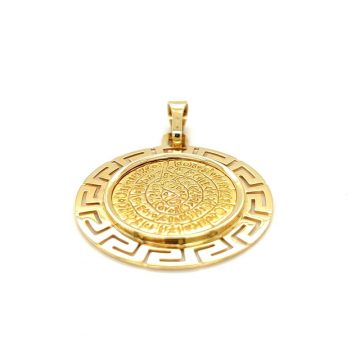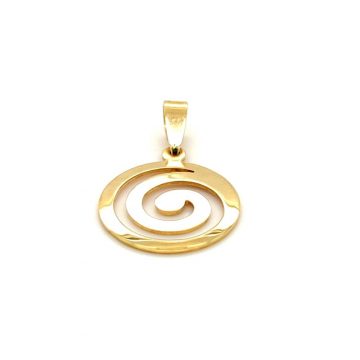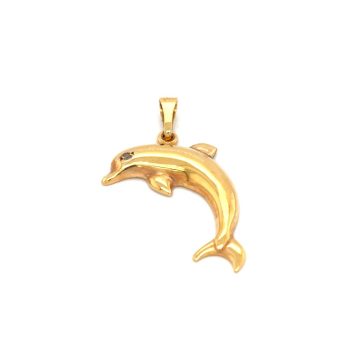Pendant, gold K14 (585 °), Disc of Phaistos with meander
A pendant made of gold K14 (585°) with the Disc of Phaistos and a meander wreath. The Disc of Phaistos is a disk of baked clay, which is an archaeological find from the Minoan city of Phaistos in southern Crete and probably dates to the middle or late Minoan Bronze Age. It is one of …
Pendant, gold K14 (585°), spiral
A pendant made of gold K14 (585°) with Spiral. The Spiral is an Ancient Greek Symbol of Life and is one of the most ancient symbols and has been used since the Paleolithic era in Greece. One of the most mysterious geometric patterns we find on the planet. It has been found in countless amphorae, …
Pendant, gold K14 (585°), dolphin with white zircon
A pendant dolphin with a zircon eye made of gold K14 (585°). The dolphin since ancient times was one of the main subjects of decoration of houses and Currencies. As a symbol of the Olympian gods it had taken a very important place in ancient art as a decorative motif or as an artistic performance. …



